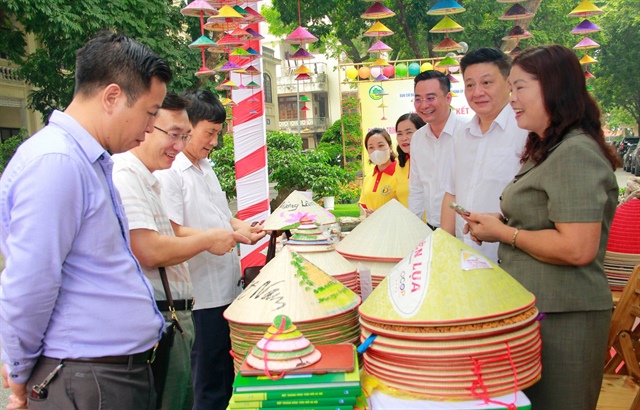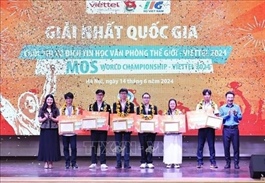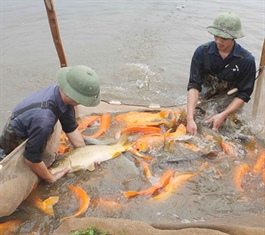OCOP strengths leveraged for sustainable Hanoi tourism
OCOP strengths leveraged for sustainable Hanoi tourism
Hanoi is setting up centers for creative design and sales of OCOP goods, traditional handicrafts, and tourism-related offerings.
Integrating the One Commune One Product (OCOP) program into tourism development creates more authentic cultural experiences and boosts market access for Vietnamese products.
Hanoi's districts promote OCOP specialties

Sticky rice from Phu Thuong Village on display at the Phu Thuong Sticky Rice Village Festival 2024. Photo: Duong Huyen Trang |
Hanoi has over 2,700 OCOP products rated three to five stars, many of which are in the culinary and handicraft categories. Several districts and towns, such as Gia Lam, Hoan Kiem, Son Tay, Chuong My, Phu Xuyen, Thuong Tin, and Thanh Tri, have incorporated OCOP products into their tourism offerings.
Souvenirs such as ceramics, bamboo ware, and mother-of-pearl inlays, as well as culinary delights such as lotus tea, steamed rice buns, and Vietnamese sausages, are factors enhancing the appeal of tours and boosting local production.
The Hong Van rural tourism site in Thuong Tin District and the Phu Dong Green Park eco-tourism site in Gia Lam District have become popular attractions since being recognized as four-star OCOP products, according to Mai Van Ngan, Deputy Chairman of Hong Van Commune, Thuong Tin District.
"Hong Van Commune is targeted to become a popular destination for domestic and international tourists by 2025, with tourism becoming the main economic driver," he said. Accordingly, the commune will promote its strengths, which are traditional craft villages.
"Tourism finally becomes the sector serving local sustainable economic growth," Ngan said.
Tay Ho has though fewer OCOP products than other districts in the city, it has been exemplary in developing tourism through its OCOP offerings. The district currently has over 40 OCOP products certified by the city, and most of them are incorporated into tourism activities.
Examples include the district's signature traditional baked goods (baked cakes, chewy cakes, fried cakes, green rice cakes) and Tay Ho Lotus Tea, as well as the four-star OCOP product of Phu Thuong Village's sticky rice craft.
The district is prioritizing the development of OCOP products in the category of community-based tourism services to create a comprehensive range of "Tay Ho OCOP Tourism Services".
Meanwhile, Ba Dinh has identified the robust development of OCOP products as a key priority. The district plans to develop OCOP products and establish a center to showcase these offerings.
By the first quarter of 2024, the district had 16 OCOP products rated three stars or higher, including seven four-star handicraft products, three traditional items (stir-fried green rice, green rice cakes, and sesame cakes under the Hang Than brand), and six others with three-star certification.
In addition to the OCOP-certified products, the district has many other potential offerings, particularly in the culinary field, such as tea, bread, pho, and various traditional cakes.
Developing OCOP products in sync with tourism

The conical hats made in Chuong village are one of Hanoi's most famous traditional handicrafts. Photo: VGP |
To build OCOP products in sync with developing tourism, Hanoi is setting up creative design, promotion and sales centers for OCOP products, traditional handicrafts and tourism-related services in Bat Trang (Gia Lam District), Chuyen My Commune (Phu Xuyen District), and Phu Nghia Commune (Chuong My District), according to Tran Thi Phuong Lan, Acting Director of Hanoi's Department of Industry and Trade.
The centers seek to add value to handicrafts, OCOP and traditional village products while building integrated supply chains from design to production, processing, and sales.
"This will be anchored in the preservation and promotion of the cultural heritage of these artisan communities, and closely linked to community-based tourism, agritourism, and the rural circular economy, contributing to the National Target Program for New Rural Development for 2021-2025," she emphasized.























